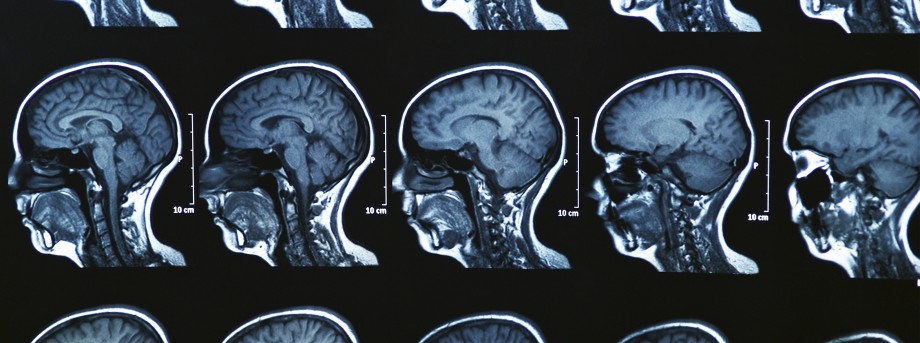The University of Nottingham
 Exchange online
Exchange online
Research Exchange
A new tool for brain research

Physicists and neuroscientists from The University of Nottingham and University of Birmingham have unlocked one of the mysteries of the human brain, thanks to new research using functional Magnetic Resonance Imaging (fMRI) and electroencephalography (EEG).
The work will enable neuroscientists to map a kind of brain function that up to now could not be studied, allowing a more accurate exploration of how both healthy and diseased brains work.
Functional MRI is commonly used to study how the brain works, by providing spatial maps of where in the brain external stimuli, such as pictures and sounds, are processed. The fMRI scan does this by detecting indirect changes in the brain’s blood flow in response to changes in electrical signalling during the stimulus.
A signal change that happens after the stimulus has stopped is also observed with the fMRI scan. This is called the post-stimulus signal and up until now it has not been used to study how the brain works because its origin was uncertain.
In novel experiments, the research team has now combined fMRI techniques with EEG, which measures electrical activity in the brain, to show that the post-stimulus signal also actually reflects changes in brain signalling.
18 healthy volunteers were monitored by using EEG to measure the electrical activity generated by their brains’ neurons (the signalling cells) while simultaneously recording fMRI measurements. A stimulus of electrical pulses was used to activate the part of the brain that controls movement in the right thumb.
The scientists then compared the EEG and fMRI signals and found that they both vary in the same way after the stimulus stops. This provides compelling evidence that the post-stimulus fMRI signal is a measure of neuronal activity rather than just changes in the brain’s blood flow. Curiously, the team also found the post-stimulus fMRI signal was not consistent, even though the stimulus input to the brain was the same each time. This natural variability in the brain response was also reflected by the EEG activity and the researchers suggest that this signal might help the brain make the transition from processing stimuli back to their internal thoughts in different ways.
Dr Karen Mullinger from The University of Nottingham’s Sir Peter Mansfield Magnetic Resonance Centre said: “This work opens a new window of time in the fMRI signal in which we can look at what the brain is doing. It may also open up new research avenues in exploring the function of the healthy brain and the study of neurological diseases.”
Dr Stephen Mayhew from Birmingham University Imaging Centre said “We do not know what the exact role of the post-stimulus activity is or why this response is not always consistent when the stimulus input to the brain is the same. We have already secured funding through the Birmingham-Nottingham Strategic Collaboration Fund to continue this research into further understanding of human brain function using combinations of neuroimaging methods.”
Director of the Sir Peter Mansfield Magnetic Resonance Centre, Professor Peter Morris, said: “Functional magnetic resonance imaging is the main tool available to cognitive neuroscientists for the investigation of human brain function. The demonstration in this paper, that the secondary fMRI response (the post-stimulus undershoot) is not simply a passive blood flow response, but is directly related to synchronous neural activity, as measured with EEG, heralds an exciting new chapter in our understanding of the workings of the human mind.”
The work has been funded by the Medical Research Council (MRC), Engineering and Physical Science Research Council (EPSRC), The University of Nottingham Anne McLaren Fellowships and University of Birmingham Fellowship and is published in the Proceedings of the National Academy of Sciences (PNAS).
The full paper, ‘Post-stimulus undershoots in BOLD and CBF fMRI responses are modulated by post-stimulus neuronal activity’ with a manuscript tracking number of 2012-21287RR is available now online.
Tags: brain, experiments, fMRI, Functional MRI, MRI, psychology, science, Sir Peter Mansfield Magnetic Resonance Centre
Leave a Reply
Other

Top prize for quantum physicist
A University of Nottingham physicist has won a prestigious medal from the Institute of Physics for […]

Zero carbon HOUSE designed and built by students comes home
Design and construct a low cost, zero carbon, family starter home, transport it to Spain, build […]